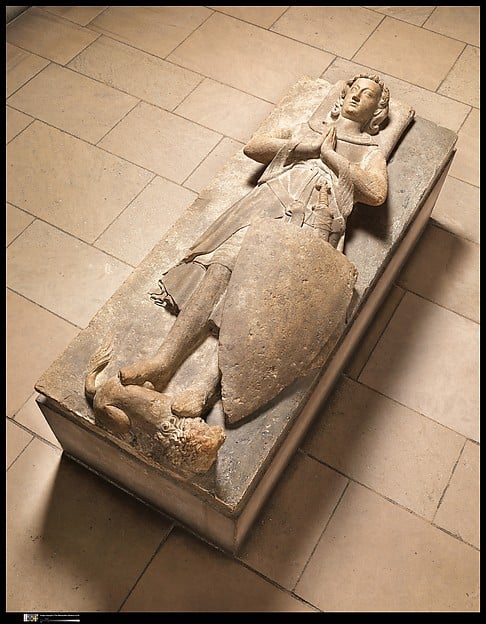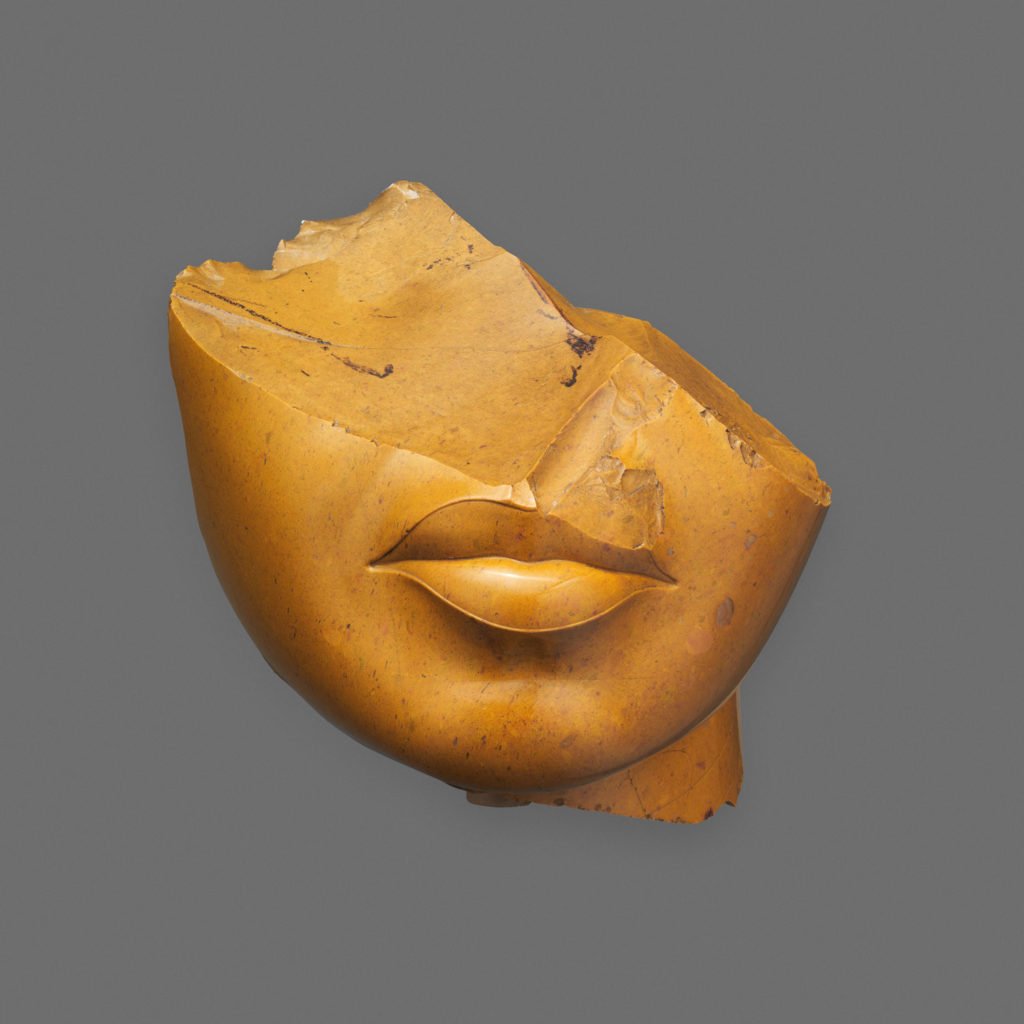On View
Adrián Villar Rojas Brings a Freewheeling Bacchanal to the Roof of the Met
Guests include the curatorial staff and ancient works from the encyclopedic museum's collection.
Guests include the curatorial staff and ancient works from the encyclopedic museum's collection.
Sarah Cascone

The artist Adrián Villar Rojas is throwing a raucous party on the roof of New York’s Metropolitan Museum of Art—and it will rage all summer. To create the site-specific installation, the Argentinian artist—who, at 37, is the youngest sculptor ever to receive the coveted annual commission—digitally scanned and mashed up nearly 100 works from the museum’s collection. The installation of 16 black and white sculptures, “The Theater of Disappearance,” looks like a freewheeling Bacchanalian fete.
The celebratory tone is fitting considering the Iris and B. Gerald Cantor Roof Garden’s status as a summertime date destination where visitors drink cocktails and take in the impressive vista of Central Park. (A security guard admitted there are concerns that forgetful guests might rest their drinks on the artworks, several of which take the form of banquet tables.)
But this installation is about more than just revelry. Villar Rojas dug deep into the Met’s collection to revive a forgotten part of its holdings: plaster casts and copies. “The Met’s history as an institution is a testimony to America’s path as a nation. Its doors opened in 1870 with a large collection of plaster casts of sculptural masterpieces,” Villar Rojas said in a statement. “By the mid-twentieth century, genuine artifacts had displaced the copies.”

Adrián Villar Rojas, photographed by Mario Caporali.
With the help of 3-D scanning and advanced imaging techniques, Villar Rojas gave the old school plaster cast a high-tech twist. To bring his vision of the Met’s history to life, he and his team leaned heavily on the museum’s Advanced Imaging Department, which made all the scans and 3-D models of the works in-house. The artist also transformed other elements the rooftop space, from the signage to the menu at the bar. He worked with the buildings department to expand the pergola and add new furniture and plantings.
At a press preview on April 13, Sheena Wagstaff, the head of the Met’s Modern and contemporary department, called the creation of the installation a “colossal historic task of investigating the museum’s collecting practice.” The museum’s architecture and design curator Beatrice Galilee thanked her fellow staff members for “handing over the most precious objects in their collections.”
In addition to selecting objects from across the Met’s 17 departments, the artist also scanned staff members and their families to create the human figures who populate the scene. (He did not spare himself: Villar Rojas’s own hand can be seen hovering above one sculpture. His fingers are in the shape of a rock n’ roll sign.)

Tomb Effigy of Jean d’Alluye, mid-13th century French,
Limestone. Courtesy of the Metropolitan Museum of Art, New York, the Cloisters Collection.
“He literally activated the entire museum and its staff in a way no other artist has done to date,” said Galilee. If you look hard enough, you can spot her lying down on one of the tables, curled up against the 13th-century tomb effigy of a knight of the d’Aluye family. The limestone sculpture has been on view at the Met’s uptown Cloisters branch since 1938.
The knight is one of the largest pieces from the collection included in the installation, although Villar Rojas is not afraid to play with scale. He recreated the museum’s famed “Fragment of a Queen’s Face,” an ancient Egyptian yellow jasper artifact, in larger-than-life size.

Fragment of a Queen’s Face, New Kingdom, Amarna Period, ancient Egypt. Courtesy of the Metropolitan Museum of Art.
Other treasures from the collection are harder to spot, having been divorced from their usual color and texture and kit-bashed together into alien arrangements and strange chimerical creatures. A master of manipulation, Villar Rojas has created an environment that is difficult to parse—only the most knowledgeable Met-lovers will be able to identify the origins of each piece. (Tracking them down inside also makes for a great scavenger hunt.)
“It could be the setting for a brand new world,” said Wagstaff, “or the last party on earth.”
“The Roof Garden Commission: Adrián Villar Rojas, The Theater of Disappearance” is on view at the Metropolitan Museum of Art, Iris and B. Gerald Cantor Roof Garden, Gallery 926, 1000 Fifth Avenue, New York, April 14–October 29, 2017.